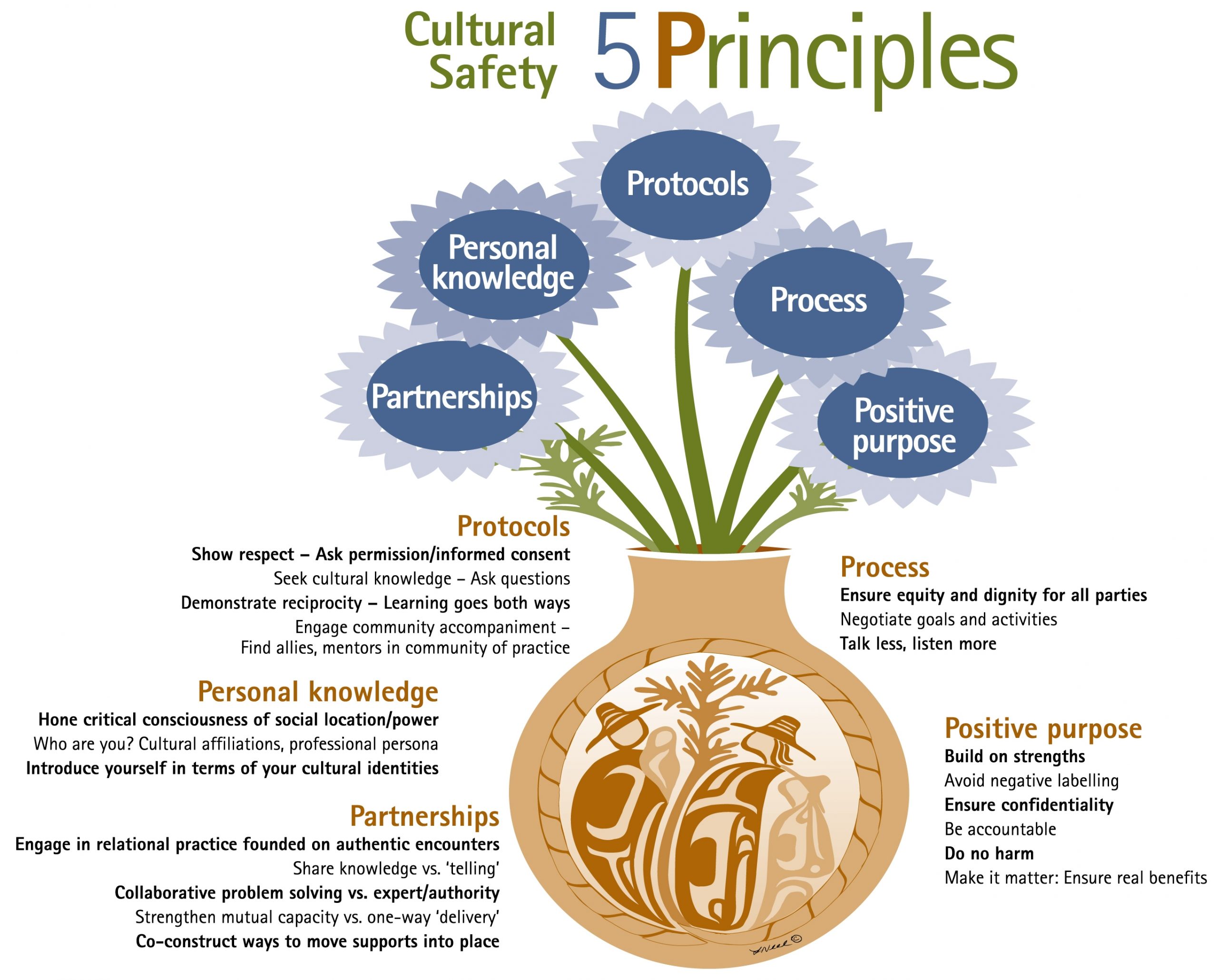Project background
Talk of cultural safety conjures the possibility that some people who seek help from service agencies have been disregarded, challenged, or harmed as a result of their encounters with health care providers and services on the basis of their social and cultural location. Unlike the linked concepts of cultural sensitivity or cultural competence, which may contribute to a service recipient's experiences, cultural safety is an outcome. Regardless of how culturally sensitive, attuned or informed we think we have been as a service professional or investigator, the concept of cultural safety asks: How safe did the service recipient experience an encounter in terms of being respected and assisted in having their cultural location, values, and preferences taken into account?
Many people who have been minoritized (e.g., Indigenous, small ethnolinguistic and religious groups) have experienced their cultural identity, beliefs, and lifestyles denigrated by service practitioners who are part of dominant cultural, linguistic, or religious groups. These practitioners might include doctors, nurses, teachers, social workers, or clergy.
A more subtle example of cultural 'un-safety' can occur when a person is asked to present oneself for a service (e.g., traveling to a hospital in a nearby town, meeting a school principal) or to participate in a program of care (e.g., entering a substance use treatment program, moving to a long-term care facility). For many people, this entails crossing cultural borders, to the foreign culture of a mainstream institution, or to a social group composed of people from cultures other than one's own. The sense of risk in cross-cultural encounters, especially when one is part of a culture that has long been the object of social injustice, can be mitigated by being accompanied by an advocate, navigator, or case worker. This support can provide cultural orientation and mediation both for the service recipient and for the service practitioner.
